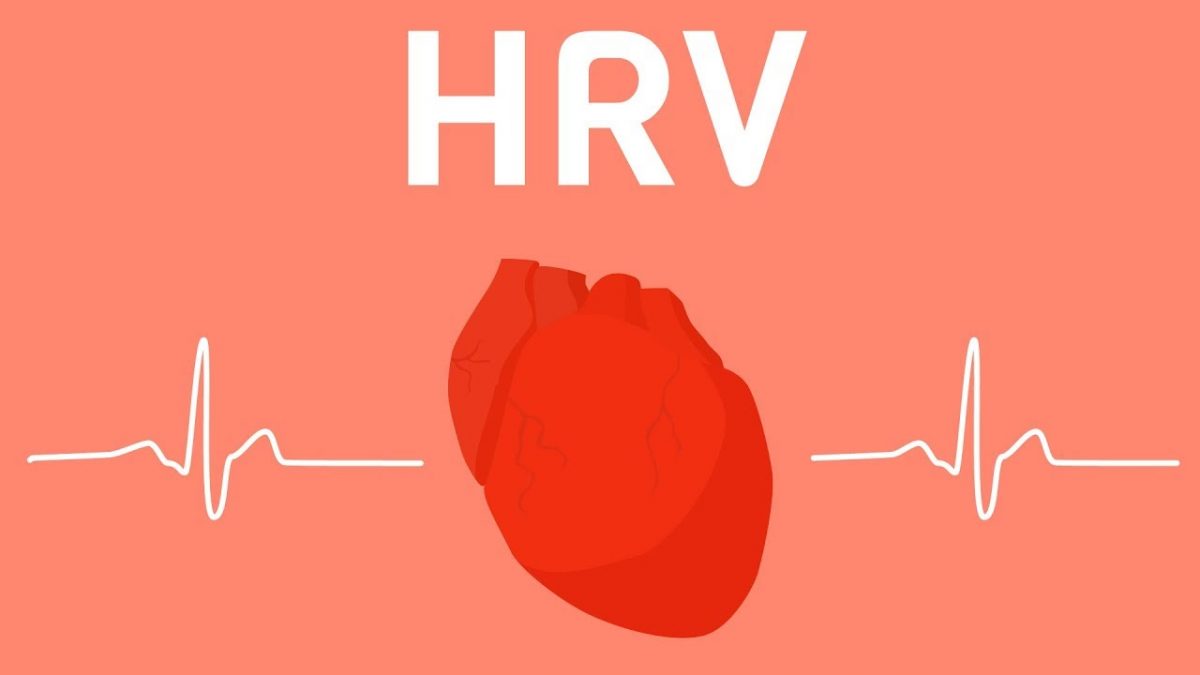In recent years, technology has advanced to the point where we can measure stress on the spot using a wearable device, such as the Apple watch, or through an app that uses the phone camera. By simply measuring your heart rate for a minute, you’ll get a stress score through something called Heart Rate Variability (HRV).
Here is a short summary of what HRV is all about:
While your heart rate measures the number of beats per minute, HRV measures the fluctuations in time between beats. Your heart isn’t a metronome and while you might not feel it, there are slight variations in the time between beats (shown in the image below). This is called HRV and is measured in milliseconds.

When there is a higher variation between heart beats, there is a good balance between the sympathetic (“flight or fight”) and parasympathetic (“rest and digest”) nervous systems, and is indicative of low stress. When there is a lower variation between heart beats, this is indicative of lower activation of the parasympathetic nervous system and high stress.
Measuring your HRV is an easy way to spot check how stressed you are on a daily basis. However, there is a lot of interindividual variability so it’s important not to worry too much about the absolute numbers. Instead, pay attention to how your values change depending on how much sleep you had the night before, your physical activity level that day, or even your psychological stress. Day-to-day fluctuations are normal, however if there is a downward trend over time, this might be an indication that you are under chronic stress, are run down, or are fighting a cold or illness. Pay attention to these trends and make sure you prioritize recovery if this is the case!
Below is a practical example of how HRV can be used to track stress and recovery.

Minimum HRV: 27ms
Maximum HRV: 130ms
Average HRV: 73ms
There were significant day-to-day fluctuations, however there wasn’t an overall upward or downward trend over the two weeks. Some of the lower HRV values were associated with physical and/or mental stressors. These are highlighted below:
Day 3 (HRV 27ms): The user indicated that she slept for 6 hours, compared to her usual 7.5 hours. Sleep is when the nervous system recovers, so this could be one reason for the low HRV value on this day.
Day 8 (HRV 50ms): The user had a high subjective stress rating this day. As HRV is an indication of both physiological and psychological stress, this might explain the lower HRV value.
Day 12 (HRV 32ms): The user recorded 6 hours of exercise the day before. This low HRV value is expected as exercise is stressful on the body. However, with proper rest and recovery, HRV values should jump back up in a day or two.
Day 14 (54 ms): The user had a high subjective stress rating this day and she also indicated that she was on the verge of getting sick. A low HRV can be indicative of the body fighting off an illness so recovery was particularly important that day.
As you can see, various factors might have contributed to the fluctuations in HRV over the course of the two weeks. While there were a few days she had a lower HRV, this wasn’t a reason for concern as there wasn’t a downward trend (a sign of chronic stress, illness, or under recovery). Keep in mind that two weeks is a good starting point but tracking your HRV for a longer period of time will give you a more accurate representation of your baseline. From there it will be easier to flag days that are out of the ordinary.
This week’s challenge: Track your own Heart Rate Variability
Now that you have the basic knowledge, hopefully you feel empowered to try this out yourself!
Your challenge is to track your HRV every day this week (either using a wearable device or with an app on your phone). A few things to remember:
- Always measure around the same time every day. First thing in the morning is a good way to keep it consistent.
- During the measurement, stay completely still.
- Make sure you don’t measure it within a couple hours of exercising.
Make a note of other lifestyle factors (sleep, stress, exercise, etc.) as well to see if you see any trends. And remember to listen to your body! If you have a couple high stress days it’s not a big deal. However, if you are seeing a downward HRV trend, make sure to prioritize rest and recovery.
Let us know what you find!
Author Bio
Greg Wells is the CEO and founder of Wells Performance, a global consulting firm on a mission to elevate how we live our lives at work and in life. He has worked with some of the highest-performing individuals on the planet, including Olympic and world champions and elite organizations including General Electric, BMO, Deloitte, KPMG, BMW, Audi, Sysco Foods, YPO and Air Canada. He is also committed to inspiring children and young adults, working with school boards and independent schools around the world.








